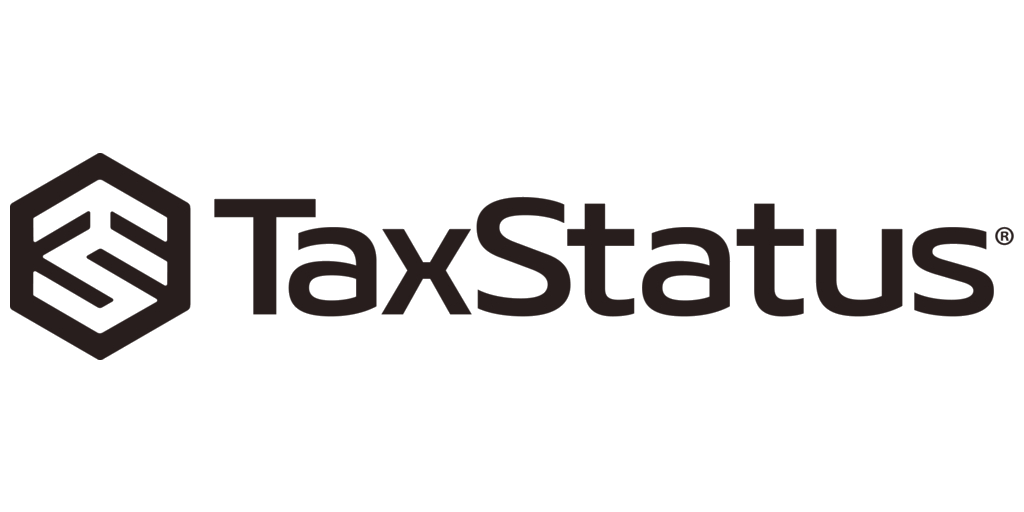New York State Income Tax Rates and Brackets for 2024-2025
New York state has nine income tax rates, ranging from 4% to 10.9%. Tax credits and deductions, filing status and residency status can influence what you pay.

Many, or all, of the products featured on this page are from our advertising partners who compensate us when you take certain actions on our website or click to take an action on their website. However, this does not influence our evaluations. Our opinions are our own. Here is a list of our partners and here's how we make money.
Key takeaways
Income tax rates: New York has nine income tax rates, ranging from 4% to 10.9%. People who make above $107,650 are subject to a supplemental tax.
Tax deadlines: State tax returns and payments were due by April 15, 2025, the same day as the federal tax deadline.
Filing taxes in New York: Some taxpayers may be able to file their state taxes for free via the IRS Direct File program this year.
New York has one of the highest marginal tax rates in the country, topping out at 10.9%. However, how much New Yorkers end up paying in state income taxes depends largely on their income, filing status and which tax rates and brackets apply to them.
People who live in New York City and Yonkers may need to pay local income taxes in addition to their state-level taxes.
News alert: New York state inflation refund check 2025
On May 8, 2025, lawmakers passed a $254 billion spending bill that includes plans to send about 8 million New Yorkers inflation refund checks as a result of a surplus in state sales tax. Checks will begin being mailed out in mid-October and may take several weeks to arrive.
To qualify, New Yorkers must have had a 2023 New York adjusted gross income of $300,000 or less (joint filers) or $150,000 or less (single filers). You can check your adjusted gross income on line 33 of your 2023 return. Checks will range from $150 to $400, depending on filing status and income.
New York state income tax rates
New York has nine income tax rates: 4%, 4.5%, 5.25%, 5.5%, 6%, 6.85%, 9.65%, 10.3% and 10.9%. The tax rates and brackets below apply to taxable income earned in 2024, which is reported on tax returns that were due April 15, 2025.
If your 2024 New York state taxable income was less than $65,000, use the New York state tax tables instead. High-earning New Yorkers with an adjusted gross income (AGI) over $107,650 are also required to pay a supplemental tax, which requires additional worksheets (learn more).
Single filers and married filing separately
Tax rate | Taxable income bracket | Tax owed |
|---|---|---|
4% | $0 to $8,500. | 4% of taxable income. |
4.5% | $8,501 to $11,700. | $340 plus 4.5% of the amount over $8,500. |
5.25% | $11,701 to $13,900. | $484 plus 5.25% of the amount over $11,700. |
5.5% | $13,901 to $80,650. | $600 plus 5.5% of the amount over $13,900. |
6% | $80,651 to $215,400. | $4,271 plus 6% of the amount over $80,650. |
6.85% | $215,401 to $1,077,550. | $12,356 plus 6.85% of the amount over $215,400. |
9.65% | $1,077,551 to $5,000,000. | $71,413 plus 9.65% of the amount over $1,077,550. |
10.3% | $5,000,001 to $25,000,000. | $449,929 plus 10.3% of the amount over $5,000,000. |
10.9% | $25,000,001 and over. | $2,509,929 plus 10.9% of the amount over $25,000,000. |
Married filing jointly and surviving spouse
Tax rate | Taxable income bracket | Tax owed |
|---|---|---|
4% | $0 to $17,150. | 4% of taxable income. |
4.5% | $17,151 to $23,600. | $686 plus 4.5% of the amount over $17,150. |
5.25% | $23,601 to $27,900. | $976 plus 5.25% of the amount over $23,600. |
5.5% | $27,901 to $161,550. | $1,202 plus 5.5% of the amount over $27,900. |
6% | $161,551 to $323,200. | $8,553 plus 6% of the amount over $161,550. |
6.85% | $323,201 to $2,155,350. | $18,252 plus 6.85% of the amount over $323,200. |
9.65% | $2,155,351 to $5,000,000. | $143,754 plus 9.65% of the amount over $2,155,350. |
10.3% | $5,000,001 to $25,000,000. | $418,263 plus 10.3% of the amount over $5,000,000. |
10.9% | $25,000,001 and over. | $2,478,263 plus 10.9% of the amount over $25,000,000. |
Head of household
Tax rate | Taxable income bracket | Tax owed |
|---|---|---|
4% | $0 to $12,800. | 4% of taxable income. |
4.5% | $12,801 to $17,650. | $512 plus 4.5% of the amount over $12,800. |
5.25% | $17,651 to $20,900. | $730 plus 5.25% of the amount over $17,650. |
5.5% | $20,901 to $107,650. | $901 plus 5.5% of the amount over $20,900. |
6% | $107,651 to $269,300. | $5,672 plus 6% of the amount over $107,650. |
6.85% | $269,301 to $1,616,450. | $15,371 plus 6.85% of the amount over $269,300. |
9.65% | $1,616,451 to $5,000,000. | $107,651 plus 9.65% of the amount over $1,616,450. |
10.3% | $5,000,001 to $25,000,000. | $434,163 plus 10.3% of the amount over $5,000,000. |
10.9% | $25,000,001 and over. | $2,494,163 plus 10.9% of the amount over $25,000,000. |
🤓 Nerdy Tip: For high-earning New Yorkers, the computation of New York state taxes can be a little trickier than simply finding your taxable bracket and glancing at the "taxes owed" column.
That’s because, in 2021, New York state brought back a supplemental tax on high-earning individuals (adjusted gross income above $107,650), which in some cases can also amount to an almost flat tax on all earnings rather than just a portion of earnings. In many instances, the recapture tax will ask the taxpayer to "add back the savings from those lower tax brackets, which leaves many taxpayers at, or very close to, a flat marginal rate," Chris Whalen, a CPA based in Red Bank, New Jersey, said in an email interview.
You can calculate the supplemental tax by reviewing the worksheets on the NYS Department of Revenue's website, and good tax software should be able to do the calculations as well.
» Get the full picture: See what federal tax bracket you’re in
When are New York state income taxes due?
New York’s tax filing deadline generally follows the federal tax deadline. Tax returns for 2024 were due by April 15, 2025. Filers who requested an extension by Tax Day have until Oct. 15, 2025, to file their returns. However, an extension to file your return does not equal an extension to pay any tax due.
» Still need to file? Review our top picks for tax software

on TaxStatus's Website
What is New York's standard deduction?
The standard deduction allows taxpayers to reduce their taxable income by a fixed amount. The New York state standard deductions for 2024 (taxes filed in 2025) are:
Single: $8,000.
Single (claimed as dependent): $3,100.
Married filing jointly or surviving spouse: $16,050.
Married filing separately: $8,000.
Head of household: $11,200.
» Zoom out to the federal level: How much is the standard deduction this year?
Do I have to pay New York state income tax?
There are three types of residency statuses when it comes to New York state tax. They determine what portion of your income the state will tax.
Generally, you have to file a New York state tax return if you’re a New York resident, and you’re required to file a federal tax return or your federal gross income plus New York additions was more than $4,000 ($3,100 if you’re single and someone can claim you as a tax dependent). Here are the other rules for different residency statuses:
» Filing in multiple states and need help? Here's how to find a tax preparer near you
New York City income tax rates
New York City tax rates are 3.078%, 3.762%, 3.819% and 3.876% for the 2024 tax year (taxes filed in 2025). These are additional taxes NYC residents are subject to on top of what they owe to New York state.
Similar to New York state, how you calculate your New York City taxes depends on your income. And again, keep in mind that your final tax bill will also be influenced by other factors, including credits and deductions you may qualify for.
NYC tax rates for single filers and those married filing separately
New York City taxable income | NYC tax owed |
|---|---|
$0 to $12,000. | 3.078% of NYC taxable income. |
$12,001 to $25,000. | 3.762% of the amount over $12,000, plus $369. |
$25,001 to $50,000. | 3.819% of the amount over $25,000, plus $858. |
$50,001 and over. | 3.876% of the amount over $50,000, plus $1,813. |
NYC tax rates for those married filing jointly and surviving spouses
New York City taxable income | NYC tax owed |
|---|---|
$0 to $21,600. | 3.078% of NYC taxable income. |
$21,601 to $45,000. | 3.762% of the amount over $21,600, plus $665. |
$45,001 to $90,000. | 3.819% of the amount over $45,000, plus $1,545. |
$90,001 and over. | 3.876% of the amount over $90,000, plus $3,264. |
NYC tax rates for heads of household
New York City taxable income | NYC tax owed |
|---|---|
$0 to $14,400. | 3.078% of NYC taxable income. |
$14,401 to $30,000. | 3.762% of the amount over $14,400, plus $443. |
$30,001 to $60,000. | 3.819% of the amount over $30,000, plus $1,030. |
$60,001 and over. | 3.876% of the amount over $60,000, plus $2,176. |
Note: If your New York City taxable income was less than $65,000 in 2024, use the New York City tax tables instead.
5.0
NerdWallet rating- Federal: $79 to $139. Free version available for Simple Form 1040 returns only.
- State: $0 to $69 per state.
- Expert help or full service filing is available with an upgrade to Live packages for a fee.
4 things to know about New York state income tax
Some people may be eligible to file their federal and New York state income taxes for free this year via the IRS' Direct File program. You can also check to see if you qualify for the IRS Free File program, which may cover a state return.
Wondering where your New York state income tax refund is? Good news: You can check the status of your state tax refund online.
If you can’t afford your tax bill and owe $20,000 or less, New York offers payment plans. Typically, you get three years to pay your bill.
You can also apply for the state’s offer in compromise program, which might allow you to pay less than you owe.
ON THIS PAGE
ON THIS PAGE










